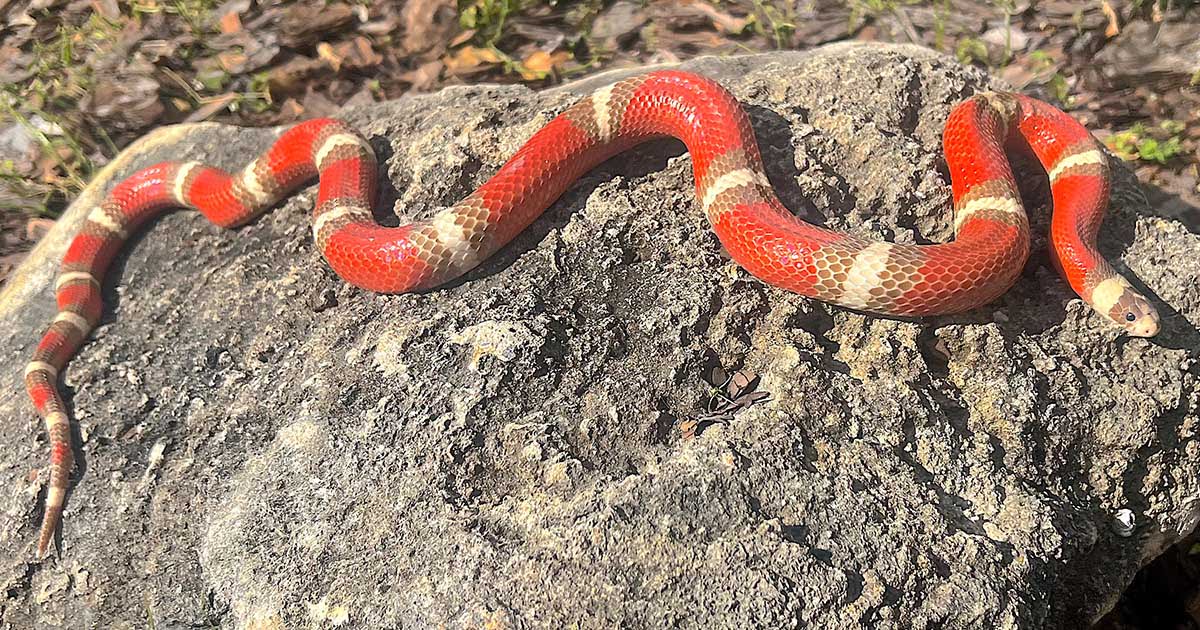Reptiles, with their scaly skin, cold-blooded physiology, and prehistoric heritage, have fascinated mankind for years. These tetrapod vertebrates feature dry, scaly skin, which keeps them from drying out and helps them regulate their body temperature externally. Belonging to the class Reptilia, these creatures have inhabited the Earth for around 315 million years, evolving from ancient dinosaurs to modern day reptiles. These qualities instigate many nature lovers to search for interesting facts about reptiles.
In modern times, reptiles have been gaining popularity as pets, loved by many for their exotic nature and low care requirements compared to other pets. Reptile owners also appreciate the quiet, mysterious demeanor of these animals besides their minimal feeding needs. However, apart from their popularity in terrariums, reptiles contain a lot of surprising traits that are not commonly known. Whether you are researching reptiles for sale or just interested in learning, read on for 10 interesting facts about reptiles!
1. Exothermic Animals
Unlike birds and mammals, which generate their own heat, reptiles have an exothermic physiology. This means that external sources help regulate their body temperature. These vertebrates depend on the environment to maintain their core body temperature since they don’t have any internal mechanisms for regulation. So, when reptiles want to warm up, you’ll see them basking in the sun. And if it gets too hot, they’ll look for a body of water or shade to cool down.
This contrasts the endothermic physiology of mammals like us, who convert 90% of the energy from food into heat, thereby regulating their body temperature. However, since they don’t need to generate their heat, they need far less food than a similar-sized warm-blooded animal. Consequently, reptiles are great at surviving in limited food environments. For example, some snakes can even survive fine for three to six months between meals!
2. Interesting Facts About Reptiles: They Have a Three-Chambered Heart
The heart of most reptiles, such as turtles, snakes, and lizards, contains three main chambers. These include two atria and a single, partially divided ventricle. The deoxygenated blood from the body goes into the right atrium, while the oxygenated blood from the lungs collects in the left atrium. The ventricle, though single, often has incomplete septa (divisions), which separate the aerated and non-aerated blood to some extent. Still, some mixing does occur in the ventricle.
This three-chambered heart structure has evolved from the two-chambered heart seen in fish, containing one ventricle and one atrium. However, some reptiles, like the crocodilians, contain four-chambered hearts, which prevent the mixing of oxygenated and deoxygenated blood. This evolutionary step gives them a metabolic advantage compared to other species. Thus, crocodiles can snap prey efficiently, stay underwater longer, and maintain a consistent body temperature.
3. Not All Reptiles Lay Eggs
When we think of reproduction, the most common image we see is of reptiles carefully burying their eggs in sand or rock crevices, The laid eggs are usually permeable and leathery, facilitating gas exchange while retaining moisture. They also require incubation before the babies are ready to hatch.
Although many reptiles follow this egg-laying pattern, such as crocodilians and most turtles, not all species do. In fact, many are viviparous, meaning that they give birth to live young. These species carry a developing embryo in the mother’s body until it hatches, as seen in the boa constrictor and European adder.
Some also give birth through parthenogenesis, a reproductive process where females produce offspring without fertilization. This is common in whiptail lizards, Asian water monitors, and Caucasian rock lizards, among others.
4. Skin Shedding
Among the most interesting facts about reptiles, ecdysis (or shedding of skin) is one that tops the list. For these animals, shedding is all about removing and replacing the outer layer of their epidermis. But, why does this happen? Well, unlike humans whose skin grows with them, reptiles need to shed their old skin to make room for their growing bodies. In this way, shedding helps them accommodate weight gain, loss, or other physiological changes.
So, as reptiles grow, their skin does not grow or stretch with them. Instead, they form a new layer beneath the old one, and the old layer sheds away. Hence, the shedding process helps get rid of parasites attached to their old skin. It also aids in healing injuries, as the new skin is often healthier and less scarred than the old one.
5. Reptiles Are Divided Into Four Main Groups
When it comes to interesting facts about reptiles, one of the most crucial ones is the subclassification of this class of vertebrates. The reptile family has four main groups: Crocodilia (alligators and crocodiles), Squamata (snakes and lizards), Sphenodontia (the tuatara), and Testudines (turtles and tortoises).
- Crocodilia: These members include large, aquatic reptiles with flattened snouts and compressed tails, found usually in rivers and wetlands across the tropics. While primarily adapted for life in water, these vertebrates are also capable of land movement.
- Squamata: Known as the largest reptile order with over 11,500 species, Squamata includes scaled reptiles with movable quadrate bones. These facilitate them in opening their mouth wide open to consume large prey, as seen in snakes and lizards.
- Sphenodontia: Initially comprised of lizard-like reptiles, this order only has one living species today called the tuatara (native to New Zealand). Dating back to the dinosaur age, these species are nocturnal and live in cooler regions.
- Testudines: These are terrestrial or aquatic animals featuring a hard, protective shell developed from their ribs that helps protect their internal organs. Testudines have a slow metabolism and can quickly become long-lived companions (even for 100 years).
6. They Are One of the Oldest Living Creatures
If you’re looking for some of the most interesting facts about reptiles, you’d be surprised to know that this class of vertebrates is one of the oldest to inhabit the Earth. There lineage traces back to the Carboniferous period, which occurred over 300 million years ago.
These creatures were first noticed as small, lizard-like organisms, which were later followed by turtles and crocodiles. The tuatara, the only reptile remaining from the Sphenodontia group, has been around since the dinosaur age and is the oldest living fossil on Earth.
7. First Amniotic Species
During the early days, animals like amphibians used to lay their eggs in the water. Their eggs weren’t covered by a protective shield and required moist conditions for hatching. Plus, a jelly-like coating covers the amphibian’s eggs, which dries out if they lay the egg outside of water. However, this changed with the appearance of reptiles.
One of the most interesting facts about reptiles is that they are the world’s first amniotes. These are a group of vertebrates that lay their eggs on land. An amniotic egg is covered by several membranes that protect and nourish the embryo. It also has a protective shell that keeps the egg from drying, helping these animals lay their eggs in terrestrial environments.
8. Temperature Determines the Gender of Many Reptiles
One of the least known yet interesting facts about reptiles is that these vertebrates are the only ones that show temperature-dependent sex determination (TSD). In this process, the gender of the offspring is decided by the temperature at which their eggs are incubated.
For example, if the eggs laid by the mother alligator develop at 86°F, they will become female. Similarly, those incubated above 93°F grow into males. So, unlike most mammals where chromosomes determine sex, the gender in most egg-laying reptiles is based on the temperature at which the eggs are developed.
9. Very Few Reptiles Feed on Plants
Reptiles, like most snakes, prey on a carnivorous or insectivorous diet. However, a few species are also herbivores, feeding primarily on plants. These include the Green Iguanas, Galapagos Tortoises, and Spiny-tailed agamids, to name a few. The diet of an adult Green Iguana comprises mainly green leaves, such as dandelion, mustard, and turnip. Likewise, Galapagos Tortoises love to munch on cacti, lichens, berries, and even oranges and melons.
10. Reptiles Are Not Slimy
When it comes to the interesting facts about reptiles, one of the most surprising ones is that these scaly vertebrates are NOT slimy. You may think that these lovely creatures have a slimy skin. But this is only because their scales appear shiny and secrete special oils.
In reality, they have dry, scaly skin that keeps them safe from predators. In fact, keratin covers the scales on a their skin, a material that prevents water loss and helps in locomotion. So, a snake’s skin feels tough, firm, and soft when you touch it. But it’s not slimy like the one you’ve imagined.
Conclusion: Interesting Facts About Reptiles
There are many interesting facts about reptiles, from their regular shedding and dry skin to ecothermic nature and temperature-based sex determination. However, one thing is for sure: these scaly friends make great companions for any pet lover, thanks to their low care requirements and calm demeanor.
You don’t need to feed or bathe these vertebrates daily, and they come with a far lower time commitment than other pets like dogs and cats. But, before deciding on a reptile pet, take the time to find the right species for your home, ensuring a healthy, lifelong companionship.



